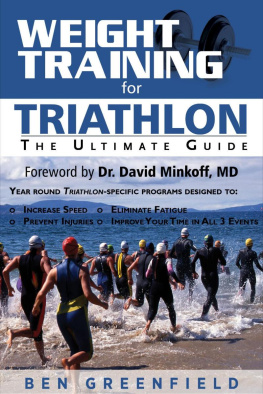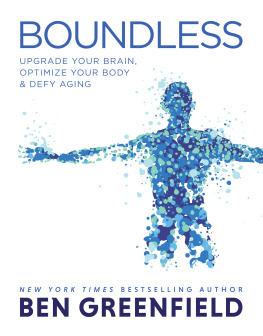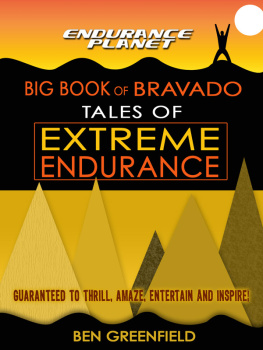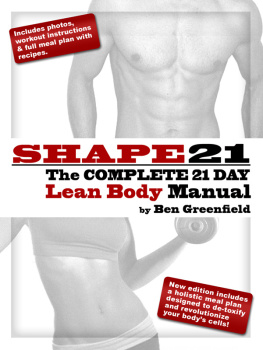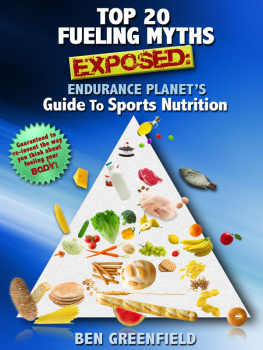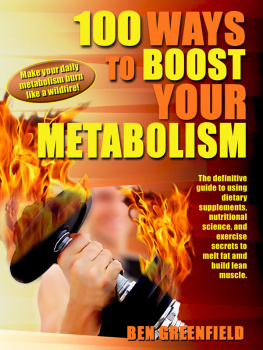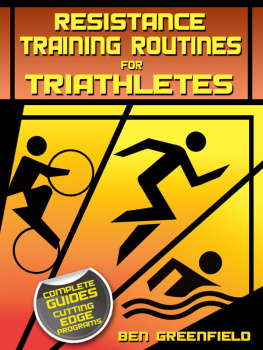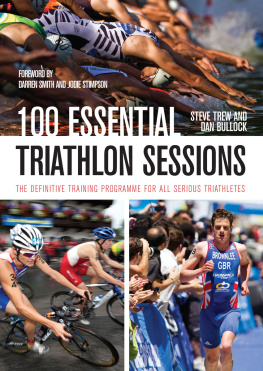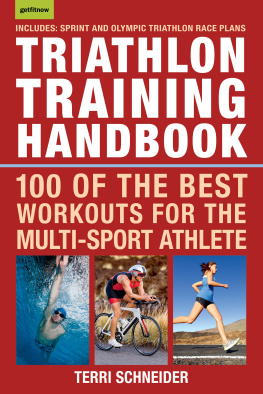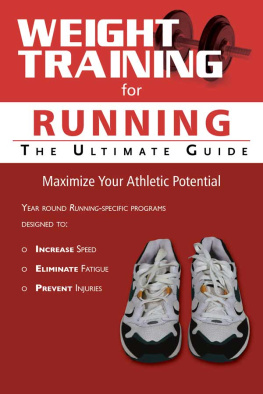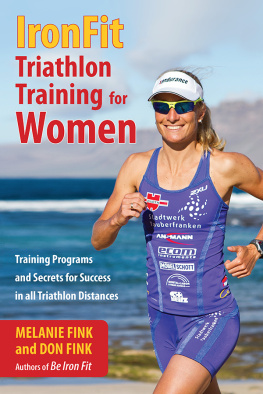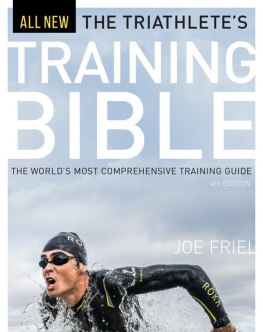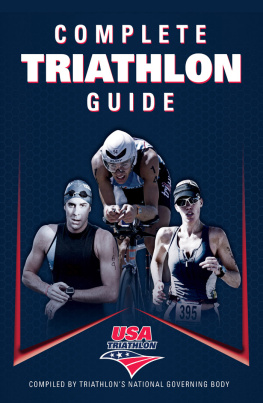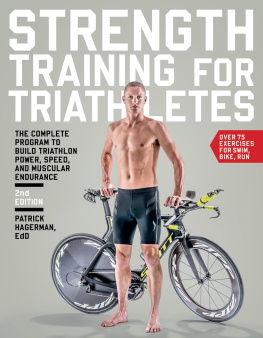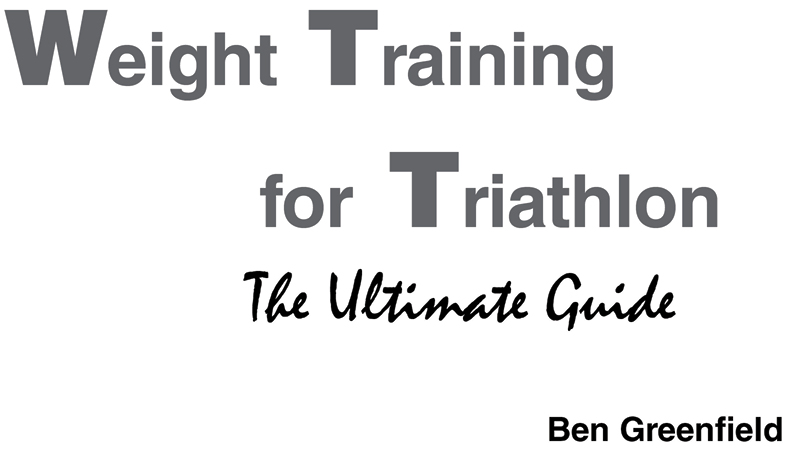
Summary of Research

A s you can see, the research on the benefits of high intensity weight training for endurance runners is becoming overwhelming, and the research on high intensity strength training for cyclists is not far behind. By the time you hold this book in your hands, it is likely that a handful of additional research studies will have been performed on weight training in triathletes and endurance athletes, and I have a serious hunch that the pattern will continue to show benefits when weight training is structured correctly. My only wish is that research will eventually attempt a long-term injury pattern study in triathletes who weight train versus those who do not. In my experience as a coach, a likely finding will be an enormously significant decrease in injury rate among triathletes who weight train, with an even greater significant decrease among the older triathlete population.
As a triathlete, you may not be running as efficiently as you could be without including high intensity weight training, and to a lesser extent, plyometrics. Remember that, with the improved running economy demonstrated by the studies above, you can run at the same speed and consume less oxygen, or you can run significantly faster with the same oxygen consumption. With the approximate 8 percent running performance improvement, this means that a 45-minute 10K Olympic distance triathlon run split could drop down to a 41:30. Furthermore, while a 25-watt increase in a five-minute maximum effort after 185 minutes of cycling may not appear relevant to triathlon, imagine if you had the leg power to be able to drop others in your group prior to the run, or simply had a few extra watts per pedal stroke during the entire cycling leg.
As you have seen, weight training and swimming studies are not as prevalent. While there is ample evidence to prove that rotator cuff and shoulder stabilization training can significantly help prevent shoulder injuries, there hasnt been a plethora of research done on combined strength and endurance training in influencing performance of elite swimmers. In the 2009 study mentioned above that appeared in Journal of Sports Science and Medicine , a dry land maximal strength and high intensity aerobic training session performed twice a week over 11 weeks improved 400-meter freestyle performance, but not performance in the 50- or 100-meter, suggesting an influence of this type of combined strength-aerobic training on distance performance in swimmers. However, in contrast to running and cycling, most forms of dry land weight training, or combined swim and weight training, do not appear to enhance swimming performance in either untrained individuals or competitive swimmers, despite significant gains in upper body strength.
None of these studies were done on recreational swimmers, such as triathletes, only on elite swimmers who already exhibit enormous levels of swimming economy that may mask any significant gains from weight training. Nonetheless, the swim-specific weight training sessions in this book are not expected to significantly enhance swim performance (although you may find that they do that for you), but rather to give the triathlete a supplemental form of maintaining upper body strength and also to provide injury protection by training the rotator cuff and stabilizing the shoulder.
Recommended Methods
of Weight Training

If you read through the research earlier in this chapter, or delve into methods used in any of the successful studies, you will find repetitive use of the terms heavy weight training or explosive weight training. What does this mean?
- Heavy Weight Training: A method that uses an external resistance capable of fatiguing the muscle within 10 repetitions or less, while lifting in a controlled manner.
- Explosive Weight Training: A method by which the lengthening (eccentric) portion of a lift is performed normally while the shortening (concentric) portion of a lift is performed as rapidly and forcefully as possible. For example, an explosive squat would involve lowering the weight under control, then standing as quickly as possible.
In addition, the following are characteristics of a weight training program that can enhance running or cycling economy, or slightly improve swim performance:
- Frequency: 1 to 3 times per week
- Length: 15 to 40 minutes per session (not including warm-up, cool-down and movement preparation work)
- Weight: 75 to 95% one repetition maximum, 40 to 60% for explosive exercises, body weight for plyometric exercises
- Sets: 2 to 5 sets, with fewer sets performed for explosive weight training exercises
- Repetitions: 4 to 10 reps, with fewer reps performed for explosive weight training exercises
- Rest Intervals: 1 to 2 minutes for weight training workouts, minimal rest for metabolic workouts and circuits.
- Speed: Controlled velocity for heavy weight training; maximum lifting velocity for explosive weight training and plyometric exercises
- Body Parts: Train entire body in each workout (upper body, lower body and core)
The workouts presented in of this book will incorporate the economy-improving guidelines presented above, but will also include weight training workouts designed to improve cardiovascular endurance and build or tone muscle for aesthetic improvement.
How to Use this Book

Lets begin with the simple assumption that, if you are holding this book in your hands, youve already committed to pursuing the sport of triathlon, putting together some semblance of a triathlon race season, or at least weight training for triathlon. But the ultimate question is, based on where youre currently at in your season and the point of the triathlon training year in which youre reading this, how do you effectively implement the workouts and exercises youll find in this book?
It is important to understand that you cant expect good results if you just randomly flip to any workout in the book and begin weight training. The fact is, if you use the same weight training volume and intensity, and the same weight and the same number of repetitions all year long, youll experience burnout and decreased performance. Just as you should make slight alterations or major changes to your swimming, cycling, and running routines, you should also modify your weight training routine as the time of year changes. If you properly decrease sets, increase power, and incorporate more explosiveness as your high priority races draw near, you can allow your weight-trained muscles to achieve peak performance on race day.
This performance peak is achieved through periodization. Periodization is the scientific term for splitting a triathlon training year into periods and focusing on a specific fitness goal for each period. Most swim, cycle and run programs use periodization, and, by following the simple rules below (which are also used to design the workout matrix later in the book), youll effectively periodize your weight training. If youre not familiar with sets, reps or other weight training terms, youll learn more about them in Part 2 of this book.
- Off-Season: If your goal is to develop muscle mass, tone muscle in a specific body area or part, or build significantly greater strength, this is the time to do it. Traditionally, the off-season is a time of year when there are few or no triathlons, and a triathlete is often engaged in other cross-training activities that go beyond swimming, cycling or running. Off-season weight training workouts are performed in a set and repetition range designed for muscular growth (hypertrophy) and, because swimming, cycling and running are de-emphasized, it is not as important during weight training to limit overly fatiguing a muscle or producing soreness instead, these effects are often necessary to achieve significant growth in muscle mass or strength. In the off-season, most workouts will include 3 to 6 sets of 10 to 15 reps apiece, with the goal of completing 2 to 3 weight training sessions each week.
Next page
